How to Avoid Ticks and Lyme Disease While Hiking!
Hiking is a wonderful way to connect with nature, explore new landscapes, and stay physically active. However, the great outdoors also comes with its share of potential hazards, and one of the most concerning for hikers is the presence of ticks and the risk of Lyme disease.
Ticks are tiny, blood-sucking arachnids that can transmit various diseases, with Lyme disease being one of the most prevalent and serious. Contracting Lyme disease can have long-term health consequences. So it is very important for hikers to take proactive steps to avoid ticks during their outdoor adventures.
In this guide, we will explore effective strategies for minimizing the risk of tick bites and Lyme disease while hiking. From understanding the habitats of ticks to employing protective clothing and using repellents, this comprehensive resource aims to fuel hikers with the knowledge and tools needed to enjoy the beauty of nature without compromising their health.
Ticks: What Are They?
From a scientific point of view, ticks are hematophagous mites. In other words, they feed on the blood of animals and human beings! Ticks are not easy to see or recognize because of their small size. They can sometimes be confused with insects that do not have the same characteristics.
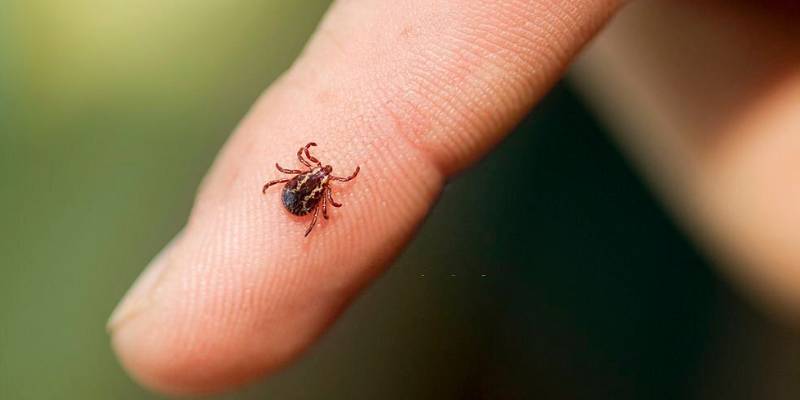
Compared to 6 insects, ticks have a characteristic brown and black color as well as 8 legs. Their abdomen is semi-circular in shape and you will find two hooks on the side of their head. It is these hooks that allow them to cling to prey in order to suck its blood.
Ticks come in several dozen distinct species depending on the geographic area you are in. It would be pointless to dwell on it since all have the same ability to hold on to suck blood. However, their size varies from one continent to another. For example, those found in the United States only measure a few millimeters (in most cases) while in Australia, they can reach 3 cm!
Dealing with Ticks While Hiking
Ticks are therefore present on the 5 continents, but not in all countries. In 2020, they are listed in 80 countries across the globe. Although this census is not exhaustive, we still know that these mites prefer humid places such as forests. The air temperature is not a determining factor since they are found both in Brazil, in the middle of the tropical forest, and in Australia!
If we look more specifically at the United States, we note that they are present in humid forests or in areas of tall grass. They particularly appreciate the ferns that abound in our forests. They are therefore placed at the upper end of a leaf or stem to increase their chances of clinging to a passing animal! So you understand that the problem of ticks can be found almost anywhere in our country! An interactive map is also available at this address: it gives the level of risk of encountering ticks in each country.
Method of Hooking Ticks
Ticks located on leaves must first bite rodents in order to grow before biting bigger and bigger animals. When they are strong enough, they are particularly fond of dogs! So be careful if you go hiking with your pet! When the canine rubs against the leaf, the tick moves through its hair and seeks an area where the skin is less thick for clinging. When it’s done, it sticks its hooks into the skin and then becomes very difficult to remove.
It then uses its rostrum (a proboscis) to penetrate the skin and reach the vein. She then releases an anesthetic so that you don’t feel anything. This is why it can be difficult to detect a tick bite! Once this is done, it can suck blood for several days if you don’t remove it (growing to several times its normal size within hours!).
How to Remove a Tick Attached to Yourself
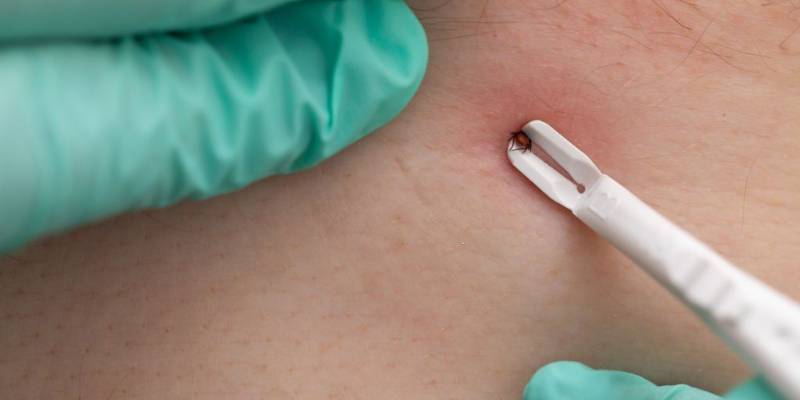
The technique used by the tick to cling to the skin and suck blood means that it should not be removed haphazardly. There are also specific tick tweezers available in drugstores.
To use a tick remover effectively, 4 steps are necessary:
- Place the tick remover as close as possible to your skin, to trap the tick’s head. Above all, don’t touch its abdomen and do not spray it with a disinfectant such as alcohol, as this would cause a reaction on its part. It would release pathogens into your blood!
- Turn the tick puller counterclockwise to release the hooks from the tick.
- Pull the tick vertically, using tweezers and without touching its abdomen again.
- Spray the bite area with a suitable disinfectant.
The Danger of Ticks: Lyme Disease
The main danger associated with a tick bite is the exchange of pathogens between the mite and its prey, namely your dog or yourself. Lyme disease is the most significant danger. Focus on this disease is still too little known!
The Clinical Definition of This Disease
According to the United States Ministry of Health, Lyme disease, also known as Lyme borreliosis, is an infection caused by bacteria. This famous bacterium, naturally present in the abdomen of the tick, manages to enter the body of the prey between 24 and 48 hours after the start of the tick bite. That’s why you shouldn’t wait to remove a biting tick!
There’s no time to lose. If infected, symptoms appear after a few days and continue to develop years after the bite. Treated early enough, Lyme disease is mild, but when left untreated it can have disastrous consequences.
Lyme Disease Symptoms
Lyme disease is a recently recognized pathology and its symptoms are still poorly understood in the long term. However, here are the most well-known symptoms that appear between 3 and 30 days after the tick bite:
- A circular reddish plaque around the bite: In medical jargon, this red plaque is called erythema migrans.
- The appearance of fever, muscle aches, and headaches may suggest a flu-like state.
- Development of a state of chronic fatigue, which can go as far as a certain form of apathy in the most serious cases. This symptom is sometimes confused with the visible part of a nervous breakdown!
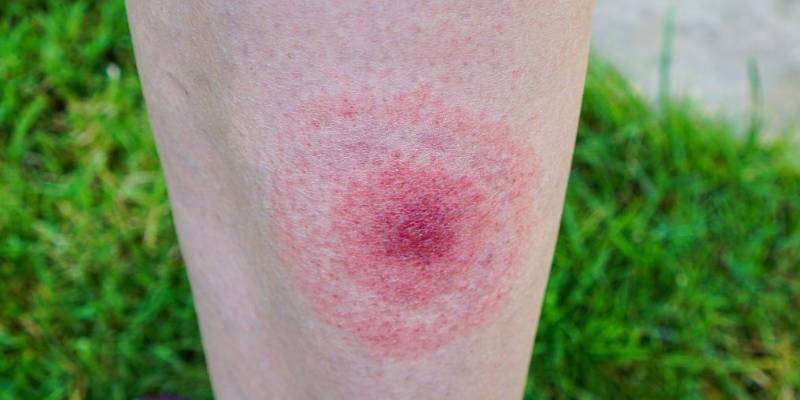
Lyme disease: Prevention and Care
The danger that Lyme borreliosis can represent leads the hiker that you are to be vigilant as to the presence and bite of ticks. Prevention is the best way not to suffer from it, but some care also exists when the first symptoms appear!
Prevent Tick Bites
The first piece of advice I can give you would be to avoid tick-infested areas as much as possible! Gone are the undergrowth filled with ferns or the fallow fields dotted with tall grass. Remember that these mites are on the lookout for prey such as dogs and human beings and that they can group together with several hundred individuals in the areas most at risk. Stay on the marked trails as much as possible.
- Don’t hesitate to consult our article 10 Tips on How to Prepare for a Hike.
You can also consider spraying areas of your body that are likely to attract ticks with repellents. Prefer those that consist of at least 50% DEET. The active ingredient is already effective against mosquitoes. While the arms, neck and legs are the parts of the body most at risk from tick bites, it is necessary to adapt your clothing to the problem. Then think of long-sleeved t-shirts and summer hiking pants rather than Bermuda shorts!
Since your legs are particularly exposed, you can turn to anti-tick gaiters or simply tuck your hiking pants into your socks in risk areas. It’s not particularly elegant, but it can save you some disappointment!
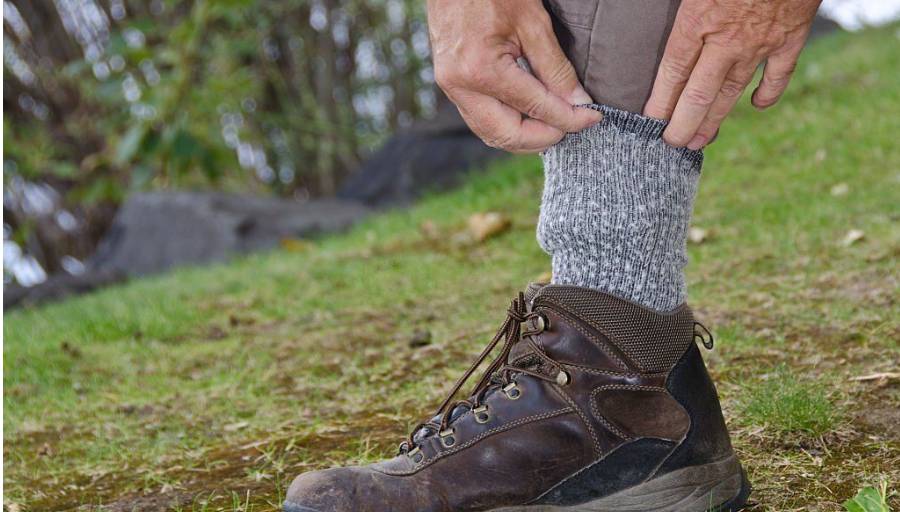
In the evening, after the day’s walk, remember to check that no ticks are on you. Remember to look particularly at the back, the underarms and the legs, where the skin is less thick. If you go hiking with your dog, it is necessary to look carefully at his hair in search of the slightest tick!
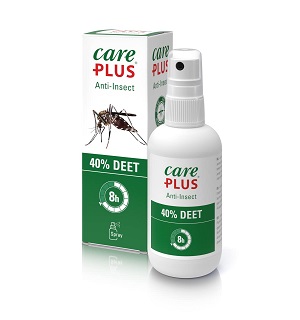
Lyme Disease Care
When the first symptoms of Lyme disease appear, which we have discussed previously, it is necessary to consult your doctor. He can prescribe antibiotics if he deems it necessary in order to slow down or even eliminate the first signs of infection. Early detection of Lyme disease is crucial for mild cases. Swift action at this stage minimizes risks. In severe instances or symptom resurgence, your doctor may recommend combined and intermittent therapy. Self-healing is not advisable; consulting a doctor is mandatory for proper treatment.
FAQs
What does a tick bite look like?
If you are bitten by a tick, a small red bump may appear within a few days to a week. Usually at the bite site, which may be warm and tender to the touch. This bump should not be confused with the so-called “bull’s eye” rash, which is a hallmark of Lyme disease.
If this tick has transmitted Lyme disease bacteria, the redness may spread over the following weeks and form a round or oval red rash larger than 5 cm in size. This sometimes manifests as a red ring surrounding a clear area and red center (i.e. bull’s eye), but often the rash is uniformly red or reddish-blue and is mildly tender and causes itchy.
How are tick bites treated?
The most important thing to do when you find a tick on you is to remove it. You can remove the tick yourself with a tick removal tool or tweezers.
Follow these steps:
- Grasp the tick as close to the surface of your skin as possible.
- Pull up and away from the skin with constant pressure. Try not to bend or twist the tick.
- Check the bite site to see if you left any parts of the tick’s head or mouth in the bite. If so, remove them.
- Clean the bite site with soap and water.
- Once you’ve removed the tick, dip it in rubbing alcohol to make sure it’s dead. Place it in a sealed container.
What to do if the head of a tick has remained in your skin?
The head of the tick:
- If the head of the wood tick detaches the skin, it must be removed.
- Clean the skin with rubbing alcohol.
- Use a sterile needle to uncover the head and remove it.
- If there is a small piece of the head left, the skin will slowly get rid of it.
- If most of the head remains, call your doctor for help.
How long does a tick stay attached?
It depends on the tick species, the tick’s life stage, and the host’s reaction to the bite. In general, if left undisturbed, larvae remain attached and feed for about 3 days, nymphs for 3-4 days, and adult females for 7-10 days.
Are all ticks infected with pathogenic microbes?
Not all ticks are infected. Only some of the ticks will be infected with a microbe that can cause disease in humans. For most pathogens, ticks are born uninfected and only ticks that feed on an infected host become infected. The state that is most likely to transmit disease is the pupa. As larvae, they often become infected by feeding on a mouse, shrew or robin. Then, after pupating, they can transmit a pathogen at their next meal.
How do I know if a tick is infected?
It’s impossible to tell based on appearance: infected and uninfected ticks mix together. In the Tick Identification section, you will find a list of tick identification and screening services.
Important note: Even if the tick is infected, it does not mean that you are infected, because the infection requires many steps, such as knowing if the number of pathogens in the tick was high enough or if the tick has fed long enough to transmit the pathogen to you. Conversely, even if the tick is not infected, it does not mean that you cannot be; you may not have seen another infected nymph and it has bitten you.
Final Thoughts
To steer clear of ticks and Lyme disease while hiking, it’s essential to adopt preventive measures. By implementing these strategies, you can significantly reduce the risk of tick bites and potential infection. Remember, proactive precautions are key to a safer outdoor experience. In any case, it is better to prevent the bite of ticks than to bet on curative drugs. Stay on marked paths, carry repellent, and dress in long sleeves and hiking pants.
Avoiding tick bites means avoiding spoiling the pleasure of hiking!






